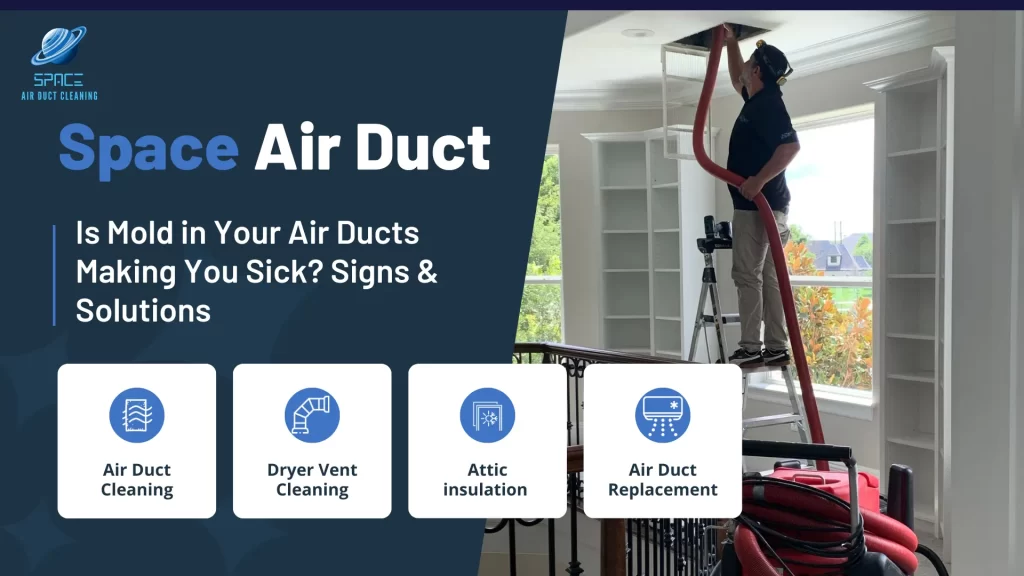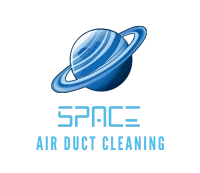Let’s be honest—most people don’t sit around thinking about what’s inside their air ducts. Out of sight, out of mind, right? But what if what’s hiding in your ducts is actually messing with your health? Specifically, we’re talking about mold.
If you’ve been dealing with unexplained headaches, allergies, constant fatigue, or a lingering musty smell you can’t pin down, your air ducts could be the culprit. Mold is sneaky. It doesn’t always show up with flashing warning signs, but once it makes itself at home in your HVAC system, the effects can get real fast.
So let’s talk about it—how to know if there’s mold in your ducts, how it can affect your health, and most importantly, what you can do about it without losing your mind or your air conditioner.
Mold in Ducts? Yep, It Happens More Than You Think
Mold needs just three things to thrive: moisture, darkness, and something to feed on. Air ducts? They check all those boxes, especially in climates like ours where air conditioning systems work overtime.
In homes and businesses throughout the Dallas area, mold can start growing in your HVAC system due to high humidity, water leaks, poor ventilation, or condensation from cold air meeting warm air. Add a little dust into the mix, and you’ve got a perfect breeding ground.
The real kicker? Once mold spores are in your ductwork, every time your HVAC system kicks on, it can send those microscopic troublemakers floating through the air—and straight into your lungs.
Common Signs You May Have Mold in Your Air Ducts
So, how do you know if mold is making a home in your ducts? It’s not always visible, but it does leave clues. One of the most telltale signs is a musty or damp smell, especially when your system first starts blowing air. It’s the kind of odor that lingers even after you’ve cleaned the house, lit a candle, or blamed the dog.
Another clue? Unexplained health symptoms. Mold exposure can trigger allergy-like reactions—even in people who aren’t usually sensitive. Think sneezing, coughing, nasal congestion, irritated eyes, skin rashes, and even trouble breathing. And here’s the weird part: symptoms often get worse when you’re indoors and improve when you leave.
If multiple people in your home or office are dealing with the same issues, and they seem to flare up in the same space, that’s another red flag. And if your energy bills are rising because your HVAC system is struggling to maintain airflow (due to mold buildup), your wallet might start feeling sick too.
Why Mold in the Ducts Is a Big Deal—Especially in Dallas
Let’s talk local for a second. In Dallas, we get heat, humidity, and our fair share of spring allergens. That combo creates a perfect storm for indoor air quality problems. And while we might not have the constant dampness of coastal cities, we do run our air conditioning systems almost year-round—which means a lot of cold air meeting hot, humid air.
That temperature clash creates condensation inside ducts. If that moisture doesn’t dry out, mold starts to grow. And once it spreads, it’s no longer just a local problem in one vent—it becomes a full-blown system issue.
That’s why homeowners and business owners here need to be proactive. Ignoring the signs or delaying action can lead to worse health problems, damage to your HVAC system, and a much bigger cleanup bill down the road.
What to Do If You Suspect Mold
First thing’s first: don’t panic, and don’t start spraying random chemicals into your vents. That might feel productive, but it’s often ineffective—and sometimes dangerous. The safest move? Call in a professional duct cleaning service to inspect the system properly.
At Space Air Duct Cleaning, we’ve seen it all—yes, even mold that looks like it’s trying to start a colony. We use specialized equipment to identify the presence of mold, assess how far it has spread, and clean the affected areas thoroughly.
A proper mold remediation process involves more than just scrubbing. It includes safely removing contaminated debris, sanitizing the ductwork, and addressing whatever caused the mold in the first place—whether it’s a leak, poor drainage, or inadequate insulation.
And here’s the good news: in many cases, professional cleaning solves the problem completely and gives your indoor air a much-needed reset.
Can Mold in the Air Ducts Really Make You Sick?
Yes, and it’s not just hype. While not everyone reacts the same way, mold can have real health impacts—especially on kids, elderly individuals, or anyone with respiratory issues like asthma or chronic sinus infections.
Even for healthy people, ongoing exposure to mold spores can lead to fatigue, dizziness, difficulty concentrating, or flu-like symptoms. The longer you’re exposed, the more your body can struggle to keep up.
If you’ve been hopping from doctor to doctor looking for answers, and nothing’s helped, it’s worth asking: when was the last time your air ducts were cleaned or inspected?
How to Prevent Mold from Coming Back
Once you’ve cleaned out the mold, the goal is to keep it from returning. That means addressing moisture. A well-functioning HVAC system should control both temperature and humidity. If your ducts are sweating like they just ran a marathon, something’s off.
Make sure your system is properly insulated, and keep an eye on areas that are prone to leaks—attics, crawl spaces, and around your AC unit. A dehumidifier can also help, especially in older homes or buildings with limited airflow.
And don’t forget regular duct maintenance. Even if you’re not seeing or smelling anything wrong, a routine inspection every few years can catch problems early—before your vents start playing host to something gross.
The Bottom Line: Don’t Let Mold Lurk Where You Live
Mold in your air ducts isn’t just an annoying smell or a mysterious health issue—it’s a real problem that deserves real attention. Whether you’re dealing with unexplained allergy symptoms, musty odors, or you’re just being cautious, it pays to take a closer look at what’s circulating through your vents.
Clean air isn’t a luxury—it’s something every Dallas homeowner and business owner should have. And sometimes, it starts by tackling what’s hidden in plain sight.
Need a professional to check for mold in your air ducts? We are here to help with expert inspections, thorough cleanings, and honest advice. Give us a call today and take the first step toward breathing easier.

